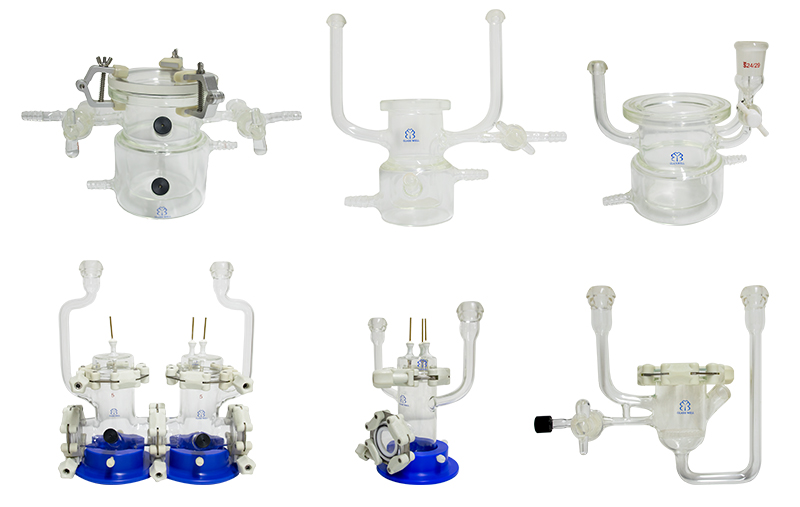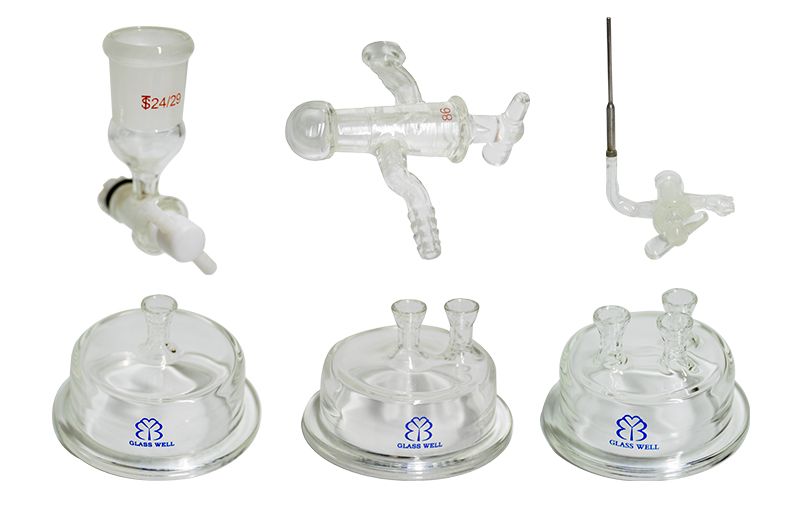Original content is not easy to create. If you wish to repost this article, please contact our staff and include a reference to the source of the information in the reposted article. Otherwise, infringement actions will be taken!
Perfectlight Technology has nearly two decades of experience in the design and manufacturing of glass reactors. We can provide glass reactors for various reaction types, reaction systems, specifications, and application scenarios.
How to Choose a Glass Reactor
1. Clearly define the application reaction type of the glass reactor
When selecting a glass reactor, it's important to first determine the specific reaction type and reaction conditions.
In photochemical reactions, to accommodate light sources such as xenon lamps and LED sources, glass reactors are often top-illuminated (offline and online reactors).
In electrochemical and photoelectrochemical experiments, different types of working electrodes, reference electrodes, and counter electrodes need to be fixed. The reactor needs to consider the fixed positions of the electrodes and the overall air tightness of the reactor. Glass reactors are side-illuminated (offline and online photoelectrochemical reactors).
In photosynthesis and photoexcitation reactions requiring 200~350 nm deep ultraviolet light, mercury lamp tubes are used as deep ultraviolet light sources. Quartz traps and internal-illuminated reactors can be used in combination for experiments.
In gas-solid reactions such as CO₂ reduction, the placement of catalysts needs to be considered, ensuring sufficient contact between the catalyst and the participating reaction atmosphere. A gas-solid reaction reactor can be used.

2. Clearly define the specifications and size of the glass reactor
After clarifying the application scenario of the glass reactor, it's necessary to determine the specific specifications and size of the glass reactor, including its volume. The volume can be divided into total volume and effective volume.
Total volume refers to the total internal volume of the glass reactor.
Effective volume refers to the actual volume containing reactants within the glass reactor.
3. Clearly define the overall experimental scenario
The glass reactor is only a part of the overall experimental scenario, which also includes different types of gases, low-temperature constant temperature baths, atmosphere mixing devices, vacuum pumps, and other equipment closely related to the experiment.
If the glass reactor needs to be connected to other equipment, the specific connection method and connection dimensions need to be clear.
If reactions inside the glass reactor require sampling during the reaction, the phase of the samples and the specific sampling method need to be determined, which will then clarify the sampling form and specifications of the glass reactor.
If reactions inside the glass reactor need to be conducted under vacuum, the glass reactor needs to have high airtightness and valves for connecting a vacuum pump for evacuation.
If reactions inside the glass reactor need to be conducted at a certain temperature, the glass reactor can use an integrated jacket. It's important to note that high-temperature reactions should be avoided within the glass reactor.
If the glass reactor needs to be connected to a gas line, the interface of the glass reactor can be designed as valveable for connecting with metal gas pipes.

Recommended
Solution